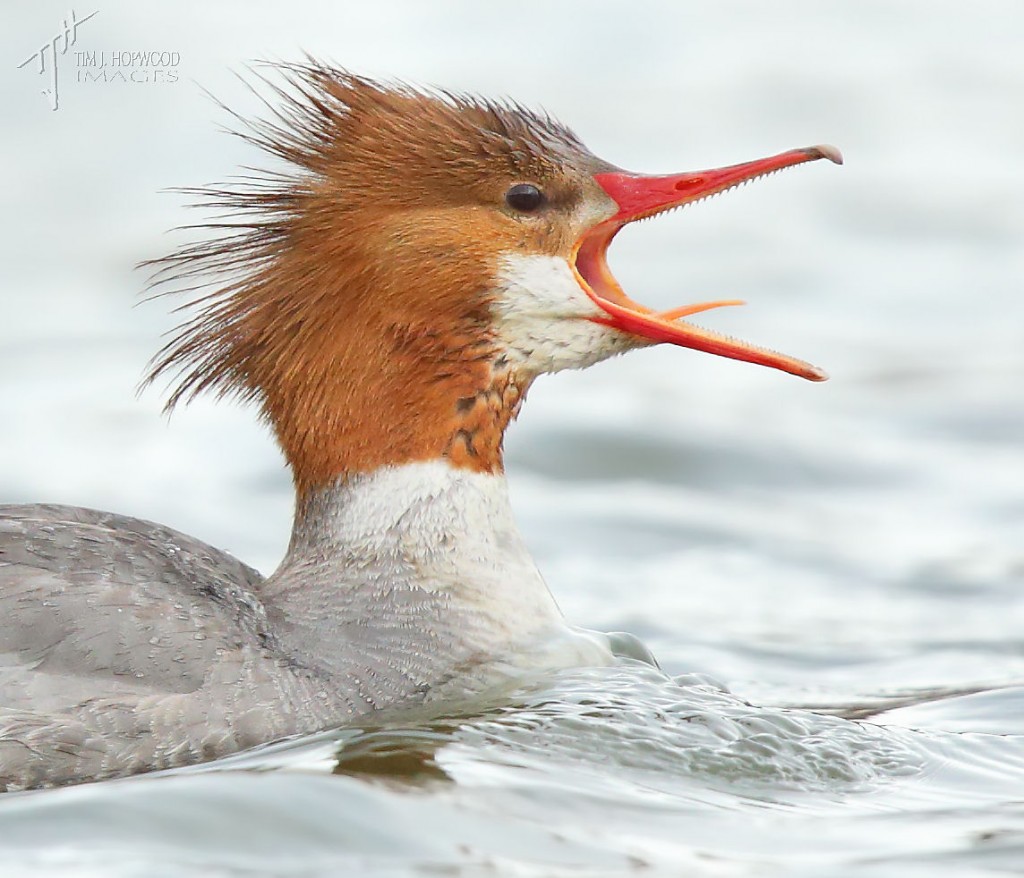 Spring – finally it has arrived! And with it, the first of the spring migrants are turning up, including large numbers of Common Mergansers heading into Alberta. While this species can be found year-round in the province, their numbers are noticeably higher in spring/summer.
Spring – finally it has arrived! And with it, the first of the spring migrants are turning up, including large numbers of Common Mergansers heading into Alberta. While this species can be found year-round in the province, their numbers are noticeably higher in spring/summer.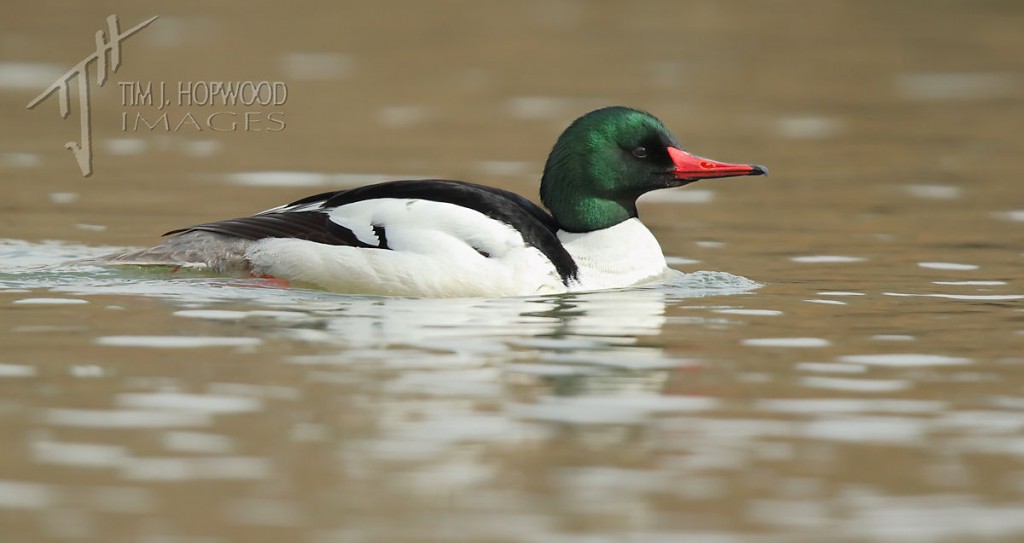 Of course, spring also means breeding season and many birds are either mated up or in the process of doing so. Fierce competition to pass on genes makes for quite a spectacle for birders, and with the advent of faster & better photographic technology each year we are able to better observe and appreciate all this frenetic action. My post this month focuses on a few days I spent shooting Common Mergansers along the Bow River in Calgary, during which I was able to get a close-up glimpse into the daily lives of this species:
Of course, spring also means breeding season and many birds are either mated up or in the process of doing so. Fierce competition to pass on genes makes for quite a spectacle for birders, and with the advent of faster & better photographic technology each year we are able to better observe and appreciate all this frenetic action. My post this month focuses on a few days I spent shooting Common Mergansers along the Bow River in Calgary, during which I was able to get a close-up glimpse into the daily lives of this species: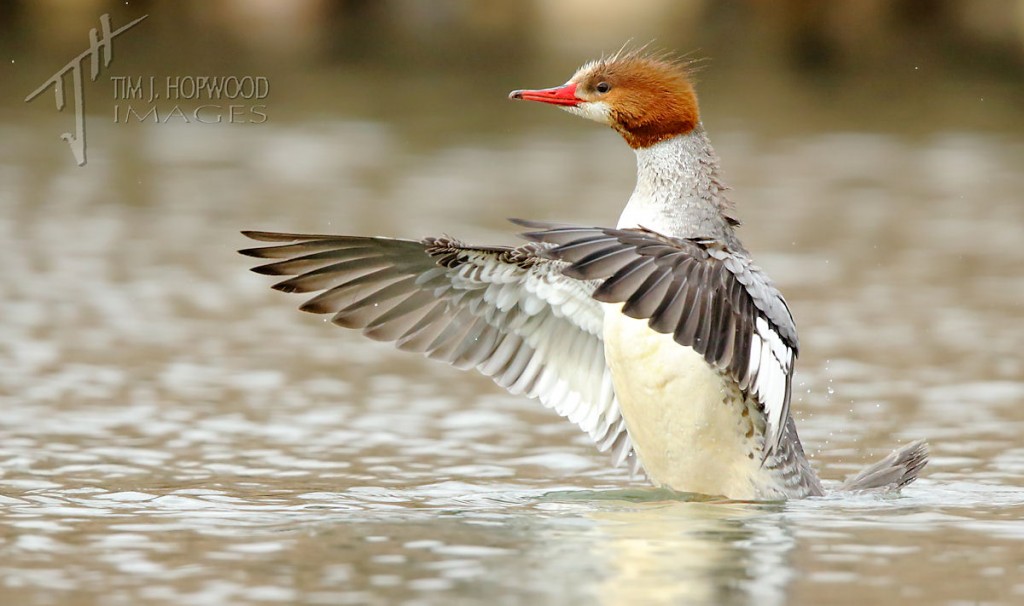 Most impressive was the fishing skills of these mergansers as I saw them bring in fish time & time again. Photography tip: when you see a bird dive down to fish, take your eye off the viewfinder and watch with both eyes (so you have a much wider field of view) for the bird to re-surface maybe 10 seconds later. Mergansers surface to eat their catch and gobble down the fish almost immediately after emerging, so you need to be ready!
Most impressive was the fishing skills of these mergansers as I saw them bring in fish time & time again. Photography tip: when you see a bird dive down to fish, take your eye off the viewfinder and watch with both eyes (so you have a much wider field of view) for the bird to re-surface maybe 10 seconds later. Mergansers surface to eat their catch and gobble down the fish almost immediately after emerging, so you need to be ready!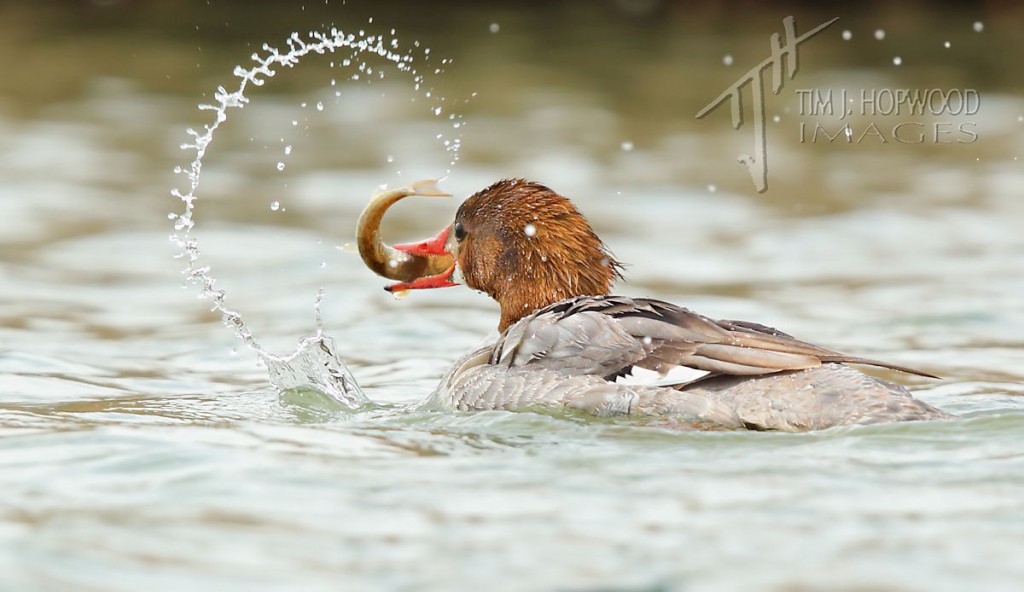
- I couldn’t believe this bird could swallow this fish whole…but it did!
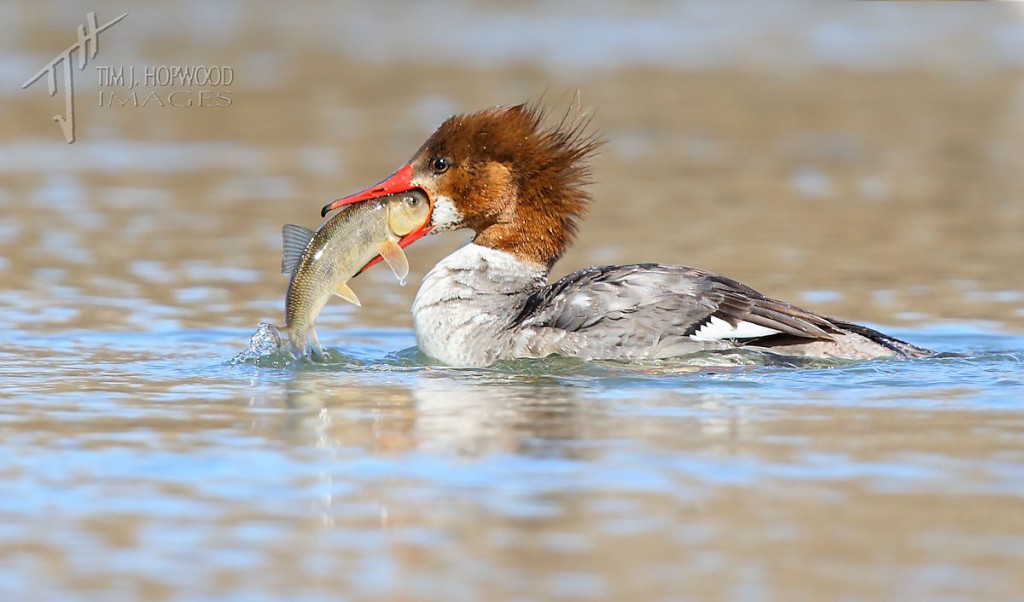 Also impressive were the lengths that paired-up mergansers went to to protect their union. I witnessed a male land near a couple & it wasn’t long before the fireworks flew, with the female clearly being the most aggressive to unwitting male visitor:
Also impressive were the lengths that paired-up mergansers went to to protect their union. I witnessed a male land near a couple & it wasn’t long before the fireworks flew, with the female clearly being the most aggressive to unwitting male visitor: 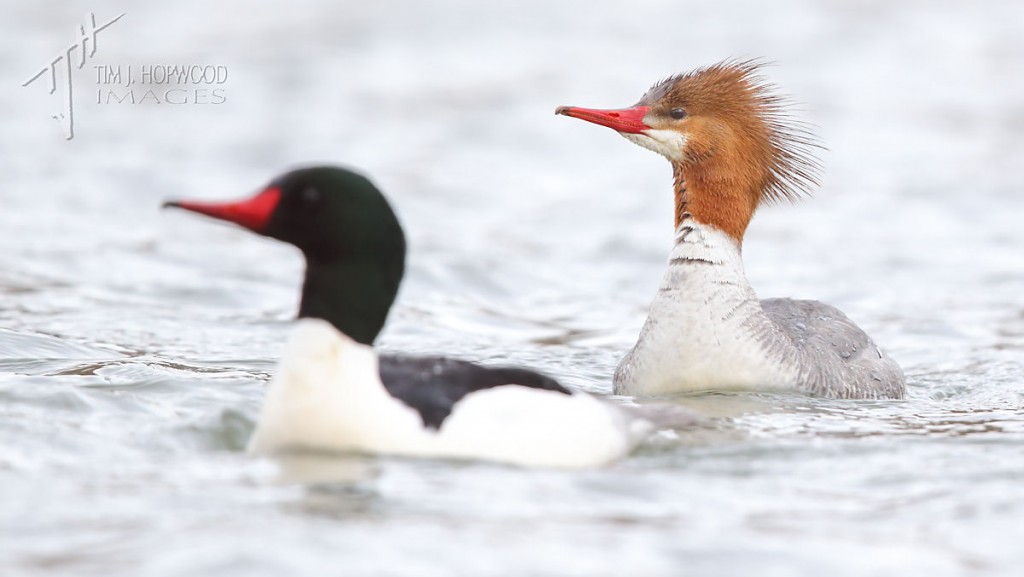
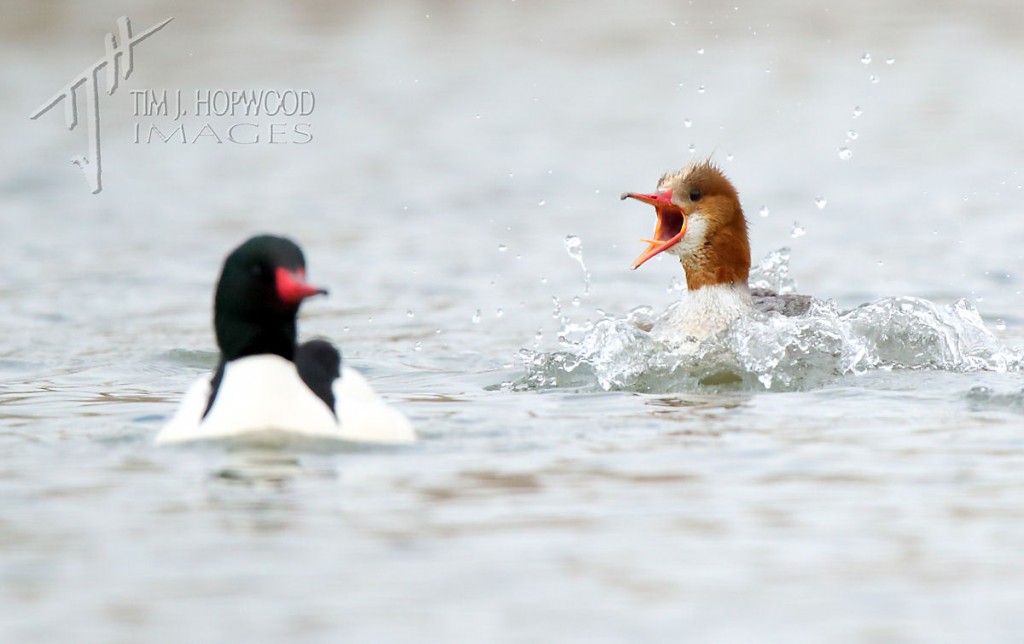
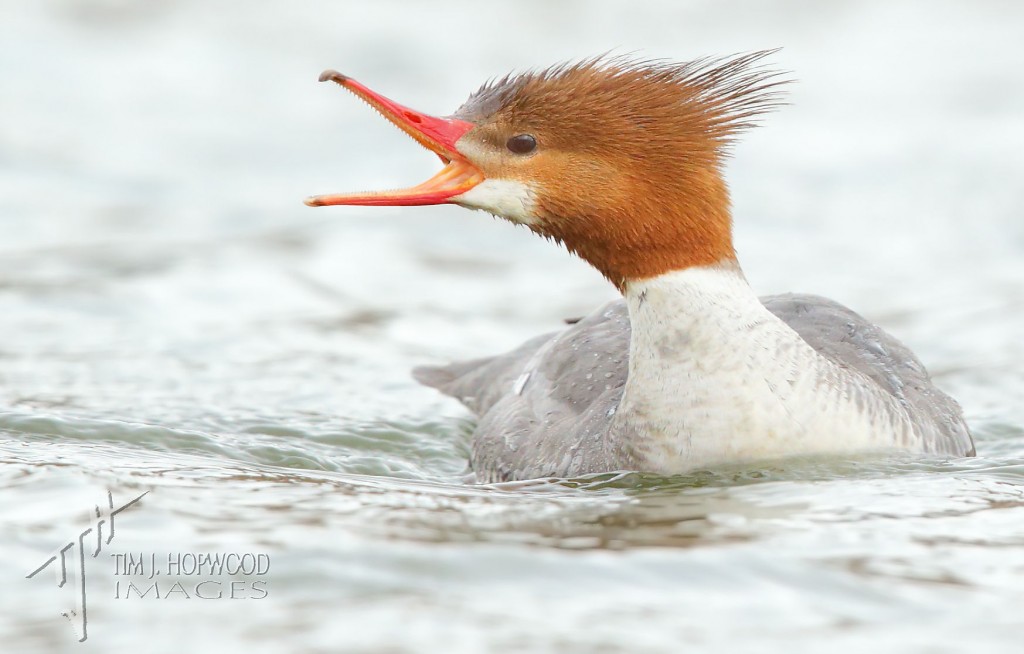
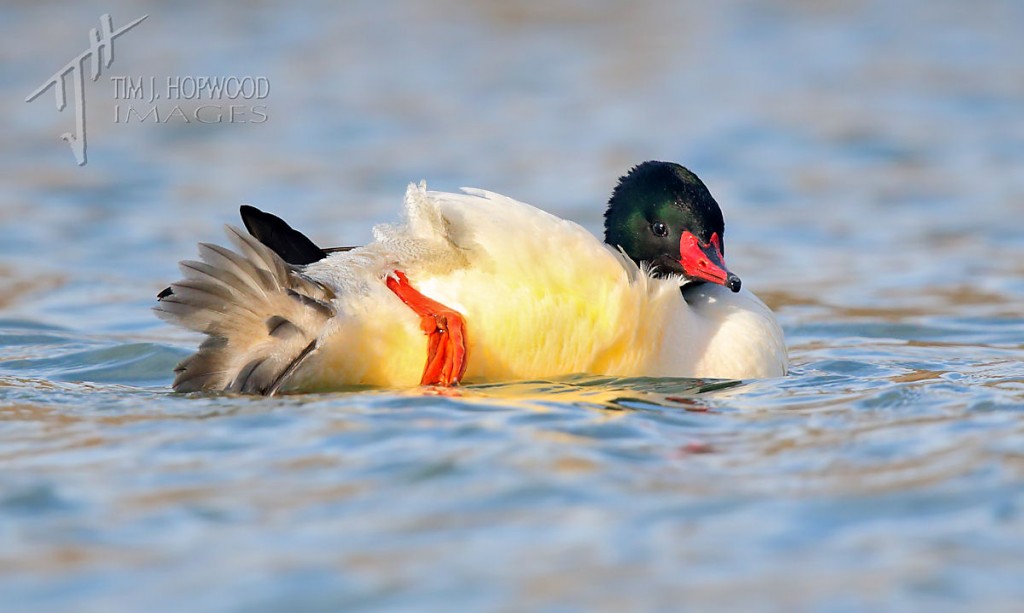
And as always, I try to get some in-flight action shots and when it comes to ducks you will get good opportunities both during take-offs and landings. I find take-offs somewhat ‘easier’ to capture, only because you usually get a little longer (maybe a second or more) forewarning via the audible flurry of rapid flapping/splashing that signals a duck looking to get airborne. Unlike ducks coming in to land where you pretty much have to see them coming in because by the time you hear them they have already touched down. That said, some ducks will do a loop of the landing zone before they alight, so sometimes that will give you time to set up, pre-focus then hope they choose to land in front of you 🙂
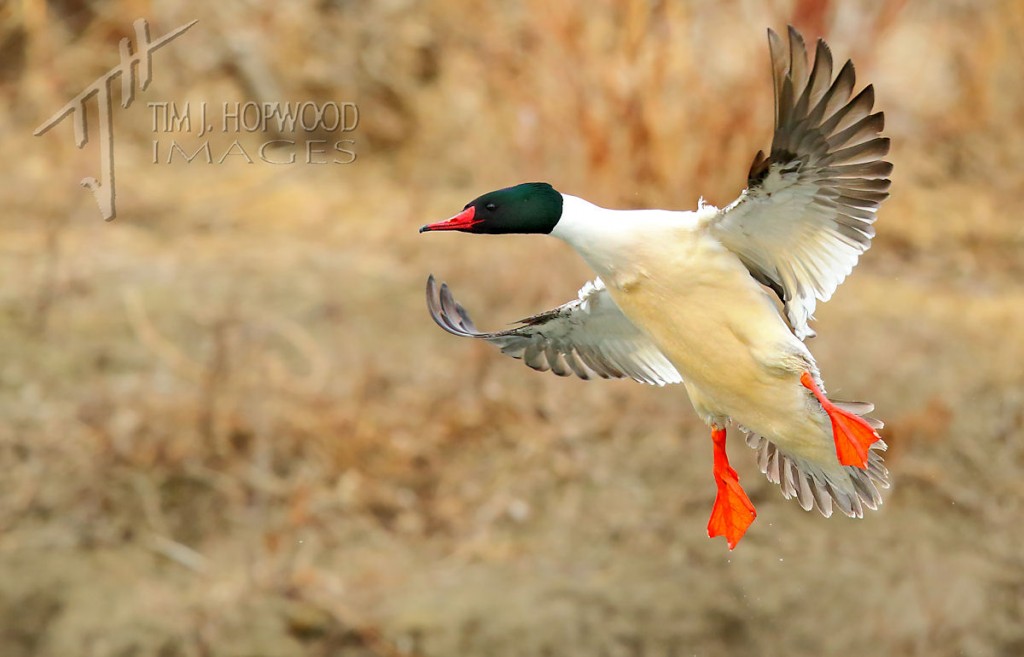
I got lucky here when this bird did a loop around before landing & allowing me just enough time to focus & starting shooting
I hope you enjoyed this month’s post, and you can always see more of my photography at my website: www.timjhopwood.com



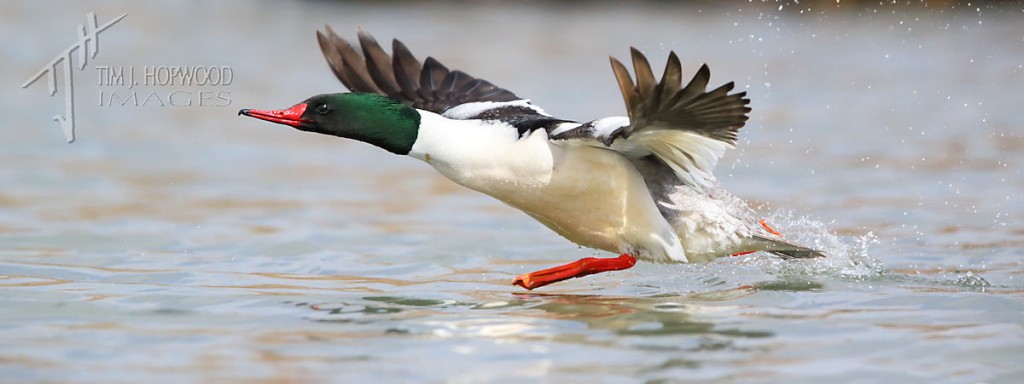
Thanks Tim, Your use of 1/2500 sec to freeze motion confirms my observations however some photographers (such as John and Barbara Gerlach) suggest that 1/1000 sec is fast enough.
Thanks, Bernard! Agree, mergansers are wary birds. Often times I rely on other people (usually people out for a stroll or a dog walk) to ‘flush’ the birds closer to me, otherwise it’s just a long wait until they gradually grow in confidence and edge a little closer. As for camera gear, I use a Canon 1Dx body with a Canon 600mm f4L ISII lens plus a 1.4x teleconverter, hand-held. I shoot at my widest possible f-stop (f5.6) 95% of the time, and bump my ISO as high as I’m comfortable with the image quality (on the 1Dx I have little hesitation going to ISO 2500) to give me an action-freezing shutter-speed which is usually a minimum of 1/2500 or higher. Hope that helps!
Great photos. I saw four common mergansers land on a small pond at Confederation Park (Calgary) this week which was surprising since these birds are quite weary. There were quite a few people in the park which explains why these birds only stayed for 10 minutes and took off. Also, since the water for the pond comes from storm sewers there might not be too many fish in that pond. By the way, what kind of camera lense (f stop and focal length) did you use ? Did you use a flash ?
Thanks, Gord – glad you enjoyed it!
Great write up pics and advice!